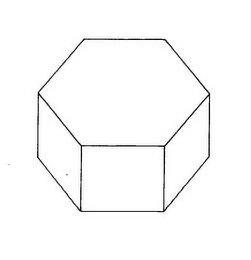Cass. ord. 31.03.2023, sez. 2, n. 9061 :
<<La sentenza impugnata ha giustificato l’attribuzione e la quantificazione dell’assegno divorzile, nella misura indicata, in funzione preminentemente assistenziale, avendo registrato uno squilibrio reddituale-patrimoniale tra gli ex coniugi e valorizzato, quale contributo dato dall’appellante alla formazione del patrimonio comune, e quindi in chiave compensativa-perequativa, la circostanza che la residenza familiare era stata fissata presso l’abitazione dei genitori della richiedente nonchè l’attività lavorativa dalla stessa espletata come baby sitter e come assistente su un pulmino per trasporto bambini.
Questa impostazione non è in linea con la giurisprudenza di legittimità formatasi dopo la sentenza delle Sezioni Unite n. 18287 del 2018.
Benchè la Corte di appello abbia formalmente preso le mosse, nell’affrontare il tema dell’assegno divorzile riconosciuto alla B.B. dalla pronunzia a Sezioni Unite di questa Corte n. 18287/2018, riportando i principi massimati, ad essa non si è poi, nel decidere, pienamente e completamente conformata.
Occorre infatti ricordare che la principale e imprescindibile funzione assistenziale dell’assegno comporta la necessità di valutare l’inadeguatezza dei mezzi dell’ex coniuge che lo richiede e l’impossibilità di procurarseli per ragioni oggettive, ai sensi della L. n. 898 del 1970, art. 5, comma 6, posto che la soglia della indipendenza economica deve intendersi come possibilità di vivere autonomamente e dignitosamente, avendo riguardo alle indicazioni provenienti dalla coscienza sociale (ex plurimis, Cass. n. 11504 del 2017 e n. 3015 del 2018).
Il divario o lo squilibrio reddituale tra gli ex coniugi vale “unicamente come precondizione fattuale il cui accertamento è necessario per l’applicazione dei parametri di cui alla l. n. 898 del 1970, art. 5, comma 6, prima parte, in ragione della finalità composita – assistenziale perequativa e compensativa – del detto assegno” (cfr. Cass. n. 32398 del 2019).
Ora, nella specie, è mancata un’effettiva valutazione dei presupposti dell’assegno divorzile in quanto si doveva accertare:
a) l’effettiva mancanza della “indipendenza o autosufficienza economica” di uno dei coniugi, intesa come impossibilità di condurre con i propri mezzi un’esistenza economicamente autonoma e dignitosa;
b) in caso di accertamento dell’autosufficienza ma di riscontro di uno squilibrio reddituale-patrimoniale, se vi fosse la necessità di compensare uno dei coniugi per il particolare contributo che lo stesso avesse dimostrato di avere dato alla formazione del patrimonio comune o dell’altro coniuge durante la vita matrimoniale, con sacrificio delle proprie concrete (e non ipotetiche) aspettative professionali (cfr. Cass.civ.21234/2019, 5603/2020, 22499/2021).
Il giudice di appello, non si è pertanto conformato ai principi sopra richiamati, riconoscendo all’assegno di divorzio una funzione assistenziale, sulla base di un mero lo squilibrio fra le due posizioni reddituali e giungendo ad affermare, pur in assenza di un accertamento condotto secondo i principi sopra illustrati, la prevalenza di tale componente senza in alcun modo spiegarne le ragioni>>.


